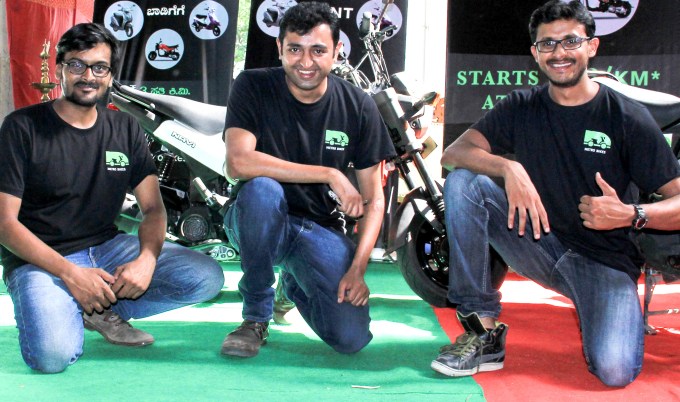TaskUs, the business process outsourcing service that moderates content, annotates information and handles back office customer support for some of the world’s largest tech companies, has raised $250 million in an investment from funds managed by the New York-based private equity giant, Blackstone Group.
It’s been ten years since TaskUs was founded with a $20,000 investment from its two co-founders, and the new deal, which values the decade-old company at $500 million before the money even comes in, is proof of how much has changed for the service in the years since it was founded.
The Santa Monica-based company, which began as a browser-based virtual assistant company — “You send us a task and we get the task done,” recalled TaskUs chief executive Bryce Maddock — is now one of the main providers in the growing field of content moderation for social networks and content annotation for training the algorithms that power artificial intelligence services around the world.
“What I can tell you is we do content moderation for almost every major social network and it’s the fastest growing part of our business today,” Maddock said.
From a network of offices spanning the globe from Mexico to Taiwan and the Philippines to the U.S., the thirty two year-old co-founders Maddock and Jaspar Weir have created a business that’s largest growth stems from snuffing out the distribution of snuff films; child pornography; inappropriate political content and the trails of human trafficking from the user and advertiser generated content on some of the world’s largest social networks.
(For a glimpse into how horrific that process can be, take a look at this article from Wired, which looked at content moderation for the anonymous messaging service, Whisper.)
Maddock estimates that while the vast majority of the business was outsourcing business process services in the company’s early days (whether that was transcribing voice mails to texts for the messaging service PhoneTag, or providing customer service and support for companies like HotelTonight) now about 40% of the business comes from content moderation.

Image courtesy of Getty Images
Indeed, it was the growth in new technology services that attracted Blackstone to the business, according to Amit Dixit, Senior Managing Director at Blackstone.
“The growth in ride sharing, social media, online food delivery, e-commerce and autonomous driving is creating an enormous need for enabling business services,” said Dixit in a statement. “TaskUs has established a leadership position in this domain with its base of marquee customers, unique culture, and relentless focus on customer delivery.”
While the back office business processing services remain the majority of the company’s revenue, Maddock knows that the future belongs to an increasing automation of the company’s core services. That’s why part of the money is going to be invested in a new technology integration and consulting business that advises tech companies on which new automation tools to deploy, along with shoring up the company’s position as perhaps the best employer to work for in the world of content moderation and algorithm training services.
It’s been a long five year journey to get to the place it’s in now, with glowing reviews from employees on Glassdoor and social networks like Facebook, Maddock said. The company pays well above minimum wage in the market it operates in (Maddock estimates at least a 50% premium); and provides a generous package of benefits for what Maddock calls the “frontline” teammates. That includes perks like educational scholarships for one child of employees that have been with the company longer than one year; healthcare plans for the employee and three beneficiaries in the Philippines; and 120 days of maternity leave.
And, as content moderation is becoming more automated, the TaskUs employees are spending less time in the human cesspool that attempts to flood social networks every day.
“Increasingly the work that we’re doing is more nuanced. Does this advertisement have political intent. That type of work is far more engaging and could be seen to be a little bit less taxing,” Maddock said.
But he doesn’t deny that the bulk of the hard work his employees are tasked with is identifying and filtering the excremental trash that people would post online.
“I do think that the work is absolutely necessary. The alternative is that everybody has to look at this stuff. it has to be done in a way thats thoughtful and puts the interests of the people who are on the frontlines at the forefront of that effort,” says Maddock. “There have been multiple people who have been involved in sex trafficking, human trafficking and pedophilia that have been arrested directly because of the work that TaskUs is doing. And the consequence of someone not doing that is a far far worse world.”
Maddock also said that TaskUs now shields its employees from having to perform content moderation for an entire shift. “What we have tried to do universally is that there is a subject matter rotation so that you are not just sitting and doing that work all day.”

And the company’s executive knows how taxing the work can be because he said he does it himself. “I try to spend a day a quarter doing the work of our frontline teammates. I spend half my time in our offices,” Maddock said.
Now, with the new investment, TaskUs is looking to expand into additional markets in the UK, Europe, India, and Latin America, Maddock said.
“So far all we’ve been doing is hiring as fast as we possibly can,” said Maddock. “At some point in the future, there’s going to be a point when companies like ours will see the effects of automation,” he added, but that’s why the company is investing in the consulting business… so it can stay ahead of the trends in automation.
Even with the threat that automation could pose to the company’s business, TaskUs had no shortage of other suitors for the massive growth equity round, according to one person familiar with the company. Indeed, Goldman Sachs and Softbank were among the other bidders for a piece of TaskUs, the source said.
Currently, the company has over 11,000 employees (including 2,000 in the U.S.) and is looking to expand.
“We chose to partner with Blackstone because they have a track record of building category defining businesses. Our goal is to build TaskUs into the world’s number one provider of tech enabled business services. This partnership will help us dramatically increase our investment in consulting, technology and innovation to support our customer’s efforts to streamline and refine their customer experience,” said Maddock in a statement.
The transaction is expected to close in the fourth quarter of 2018, subject to regulatory approvals and customary closing conditions.




